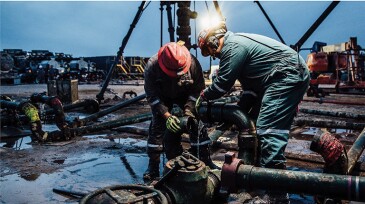Devon Energy
-
The Oklahoma City-based tight-oil producer has agreed to acquire Validus Energy.
-
Devon, Shell, and SM Energy offer some of their latest learnings from recent independent subsurface diagnostics projects. Their work underscores why this arena of technology has become a cornerstone for hydraulic-fracture design in tight-rock reservoirs.
-
The Oil and Gas Methane Partnership 2.0 counts more than 80 upstream companies as members, representing more than 30% of global production.
-
The US producer is aiming for net-zero greenhouse-gas emissions related to both Scope 1 and Scope 2 categories over the next 3 decades.
-
It won’t happen overnight, but a growing number of US shale players are taking important steps to bring more automation and stage-level decision making to the hydraulic fracturing process in tight reservoirs.
-
A lot has been learned about shale, but those working to eke out oil from that ultratight rock still extract more value from data than physics.
-
A look behind-the-scenes reveals what it takes to protect innovative ideas in the fast-moving US shale sector—key lessons learned, pitfalls to avoid, and how to do it the right way, as told by two of the operator's intellectual property (IP) protection leaders.
-
On a pro forma basis the newly combined oil company is expected to have an output of around 280,000 B/D, making it one of the top producers in the Permian Basin.
-
Groups of wells communicate, interfere, and hit each other. It is an unruly scene that can offer benefits. Three stories look at why competing fracture networks can add to the production from rock that might otherwise be missed.
-
The two shale producers are calling it a “merger of equals” and will share management duties once the transaction closes. The combined company aims to become the fourth-largest producer of tight oil in the US.










